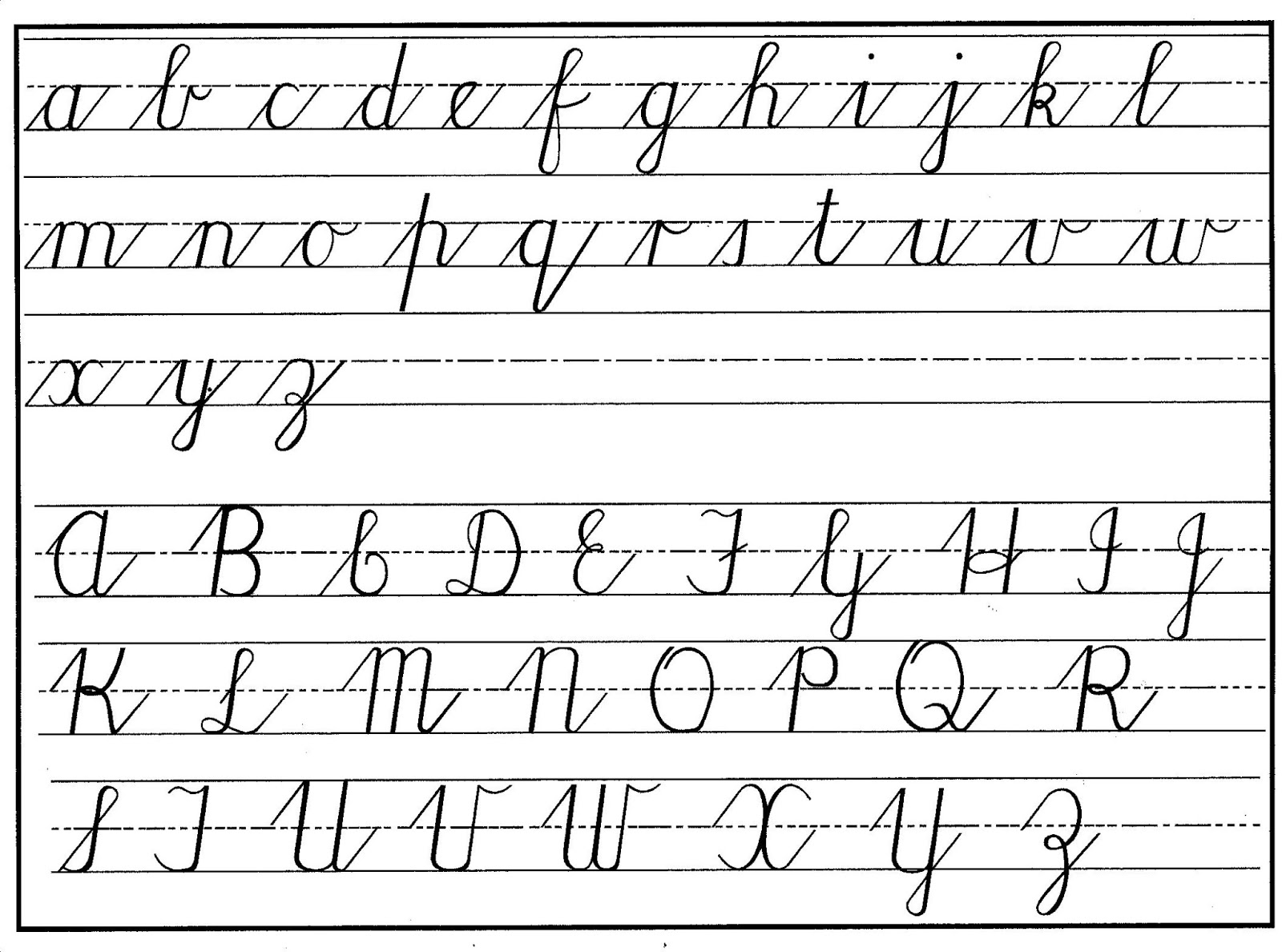Cursive handwriting is more than just a style of writing; it is an art form that conveys personality and emotion. In today’s digital age, where typing has taken precedence, the significance of cursive handwriting has often been overlooked. However, understanding its history, techniques, and benefits can revive appreciation for this elegant form of writing. This article delves into the intricacies of cursive handwriting, exploring its benefits, techniques for improvement, and its relevance in modern education.
The resurgence of interest in cursive handwriting can be attributed to its aesthetic appeal and psychological benefits. As people seek more creative outlets amidst a technology-driven world, cursive writing offers a unique way to express oneself. Moreover, studies indicate that writing by hand can enhance memory retention and cognitive skills, making cursive handwriting not just a stylistic choice but a valuable skill to cultivate.
In this comprehensive guide, we will explore the various facets of cursive handwriting, including its definition, history, and tips for mastering this beautiful art. Whether you are a student looking to improve your writing skills or an adult seeking a new hobby, this article will provide you with the knowledge and tools to enhance your cursive writing.
Table of Contents
- Definition of Cursive Handwriting
- The History of Cursive Handwriting
- Benefits of Cursive Handwriting
- Techniques to Improve Cursive Handwriting
- Practicing Cursive Handwriting
- Cursive Handwriting in Education
- Modern Usage of Cursive Handwriting
- Conclusion
Definition of Cursive Handwriting
Cursive handwriting is a style of penmanship in which the letters are connected, creating a flowing and continuous line. This form of writing is designed for speed and efficiency, allowing the writer to produce words more quickly than with printed letters. Cursive writing often features loops and curves, giving it a unique and artistic appearance.
The History of Cursive Handwriting
The origins of cursive handwriting can be traced back to ancient civilizations, where scribes would develop swift writing styles to record important documents. The word "cursive" is derived from the Latin word "currere," meaning "to run," reflecting the fluid motion of the pen. Over the centuries, various forms of cursive writing have emerged, influenced by cultural and technological changes.
Evolution of Cursive Styles
- Medieval Cursive: Flourished during the Middle Ages, characterized by its intricate loops and embellishments.
- Round Hand: Developed in the 17th century, this style emphasized clarity and legibility, making it popular for formal documents.
- Spencerian Script: Created in the 19th century, Spencerian script is known for its elegance and is often used for decorative purposes.
Benefits of Cursive Handwriting
Cursive handwriting offers numerous advantages, both psychological and educational. Here are some key benefits:
- Improved Motor Skills: Writing in cursive engages fine motor skills, aiding in hand-eye coordination.
- Enhanced Memory: Studies show that writing by hand can improve memory retention compared to typing.
- Personal Expression: Cursive writing allows individuals to showcase their unique style and personality.
- Focus and Concentration: The act of writing in cursive requires more focus, fostering deeper engagement with the material.
Techniques to Improve Cursive Handwriting
Improving your cursive handwriting involves practice and patience. Here are some effective techniques:
- Proper Grip: Hold your pen comfortably, ensuring a relaxed grip to allow fluid movement.
- Slow Down: Take your time while writing; speed will come with practice.
- Consistent Practice: Dedicate time each day to practice cursive letters and connecting words.
- Use Guides: Utilize lined paper or printable cursive guides to help maintain consistent size and spacing.
Practicing Cursive Handwriting
Regular practice is essential for mastering cursive handwriting. Here are some tips to incorporate into your practice routine:
- Daily Journaling: Keep a journal where you write in cursive to develop fluency.
- Copying Text: Select passages from books or articles and practice copying them in cursive.
- Flashcards: Create flashcards with cursive letters to improve letter recognition and formation.
Cursive Handwriting in Education
The teaching of cursive handwriting in schools has been a subject of debate in recent years. While some educators advocate for its inclusion in the curriculum, others argue that digital skills take precedence. However, cursive handwriting remains a valuable skill that can complement traditional learning methods.
Current Trends in Education
- Integration into Curriculum: Some schools have begun integrating cursive writing into their language arts programs.
- Parental Involvement: Parents are encouraged to support their children’s cursive writing practice at home.
Modern Usage of Cursive Handwriting
Despite the prevalence of digital communication, cursive handwriting continues to find its place in modern society. It is often used in:
- Personal Correspondence: Letters and invitations that benefit from the personal touch of cursive.
- Artistic Endeavors: Calligraphy and other artistic forms that use cursive writing for decoration.
Conclusion
In conclusion, cursive handwriting is a timeless skill that combines art and functionality. Its benefits extend beyond aesthetics, enhancing memory, motor skills, and personal expression. By understanding its history and employing effective techniques, anyone can improve their cursive handwriting. We encourage readers to share their thoughts in the comments below and explore additional resources on cursive writing to continue their journey.
Thank you for reading! We hope you found this guide informative and inspiring. Don’t hesitate to return for more articles that explore the beauty of writing and learning.
- 1230857 Tyler Perry Net Worth Age Height House Wife Son
- Kristy Mcnichol
- Tiffany Link Earrings
- 1534693 Piece Female Characters Deserve Attention
- La Freeway Protest
- Josh Allen Old Tweets
- Oleksandr Zinchenko
- Thay Ksada
- 1470855 Zack Lugos Biography Age Height Net Worth Girlfriend Brother


